Archives month raises awareness about the value of archives and archivists. The Society of American Archivists, supported by the Council of State Archivists and National Archives and Records Administration, started the special event in 2006.
Archival documents relate to the activities and business dealings of a person, family, corporation, association, or government. Archives contain non-current documents accumulated naturally as a by-product of a person or organization’s activities. Archives seek collections of enduring value – records and manuscripts that provide reliable sources of information. Those items may come in many forms: correspondence, diaries, financial and legal documents, photographs, video or sound recordings, and digital records.
Archives are based on two principles: provenance and original order. The first principle of provenance (respect de fonds) refers to place or source of origin and the need to maintain the documents of one entity separate from those of other entities. The second principle of original order recognizes the arrangement of documents within distinct file groups. Sometimes archives preserve documents assembled from multiple sources when the provenance or original order is uncertain. A chosen arrangement, such as topic or date order, will be applied to the collection.
Archivists work with the past every day. They often decide what records are to be preserved and are equally concerned about the present and future. Archivists are professionals who assess, collect, organize, preserve, and provide access to key information.
The Lyman Museum preserves personal papers of kanaka maoli (the Hawaiian people), Christian missionaries, and immigrant families as well as records of Hawaiʻi Island businesses, organizations, and schools. The following documents highlight personal papers and records. To learn more, the Archives is open for research by appointment: https://lymanmuseum.org/archives/.
Note: Hawaiian diacritical marks comprise just two symbols: the ʻokina (glottal stop) and the kahakō (macron). We use them with Hawaiian place names, but do not add them to proper names if a family or a company does not use them.
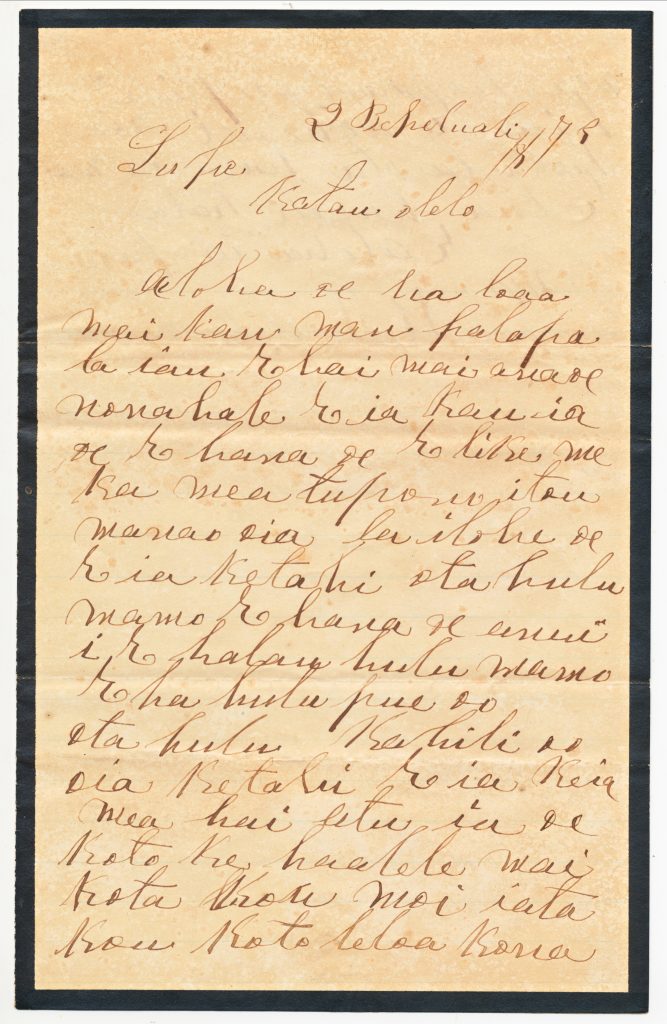
Written in ʻōlelo Hawaiʻi (Hawaiian language), Princess Luka “Ruth” Keʻelikōlani (1826-1883) wrote this letter to “Lupe” (Rufus A. Lyman) in 1878 about feathers for kahili (feather standards). The black border indicates she was in mourning, probably for her adopted son, William Pitt Leleiohoku II, who died in 1877 at 23 years old.
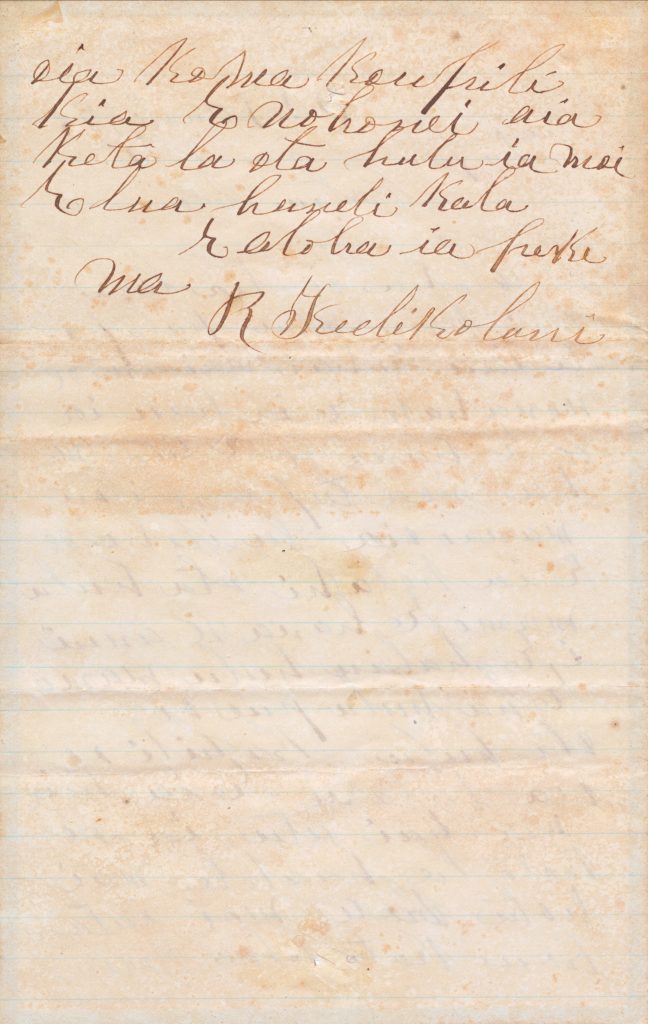
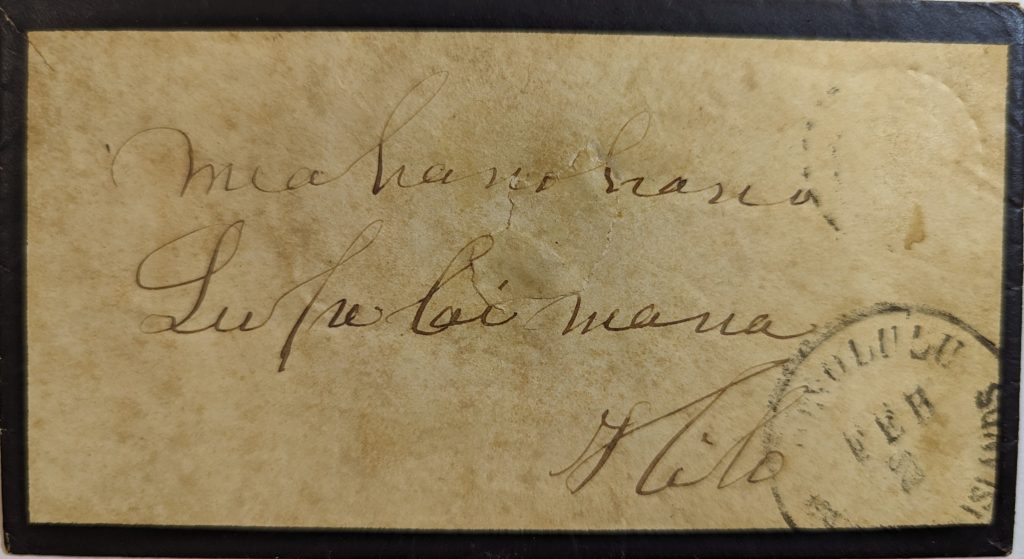
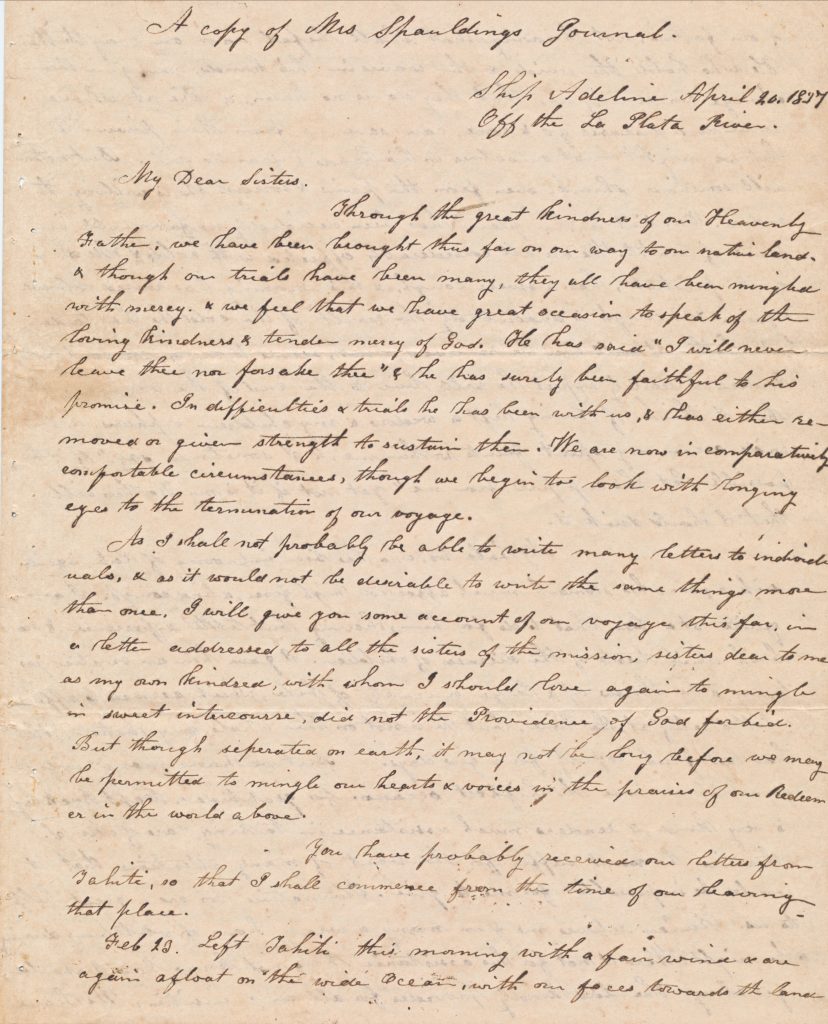
Julia Spaulding (1810-1898), a native of Massachusetts, wrote about her journey leaving Hawaiʻi addressing it to “the sisters of the mission, sisters dear to me.” Sarah Lyman copied the brief journal to circulate among Spaulding’s missionary friends. Julia Spaulding and her husband Ephraim Spaulding joined the 5th Company of missionaries sponsored by the American Board of Commissioners for Foreign Missions (ABCFM). They arrived in 1832 and were stationed at Lahaina, Maui. In 1835, the couple moved into a newly constructed house of coral blocks and rubble stone, which later became the Baldwin house. Due to Ephraim’s poor health, the couple returned to Massachusetts in 1837. This item is part of the “Missionary Archives,” an assembled collection of items given various descendants.
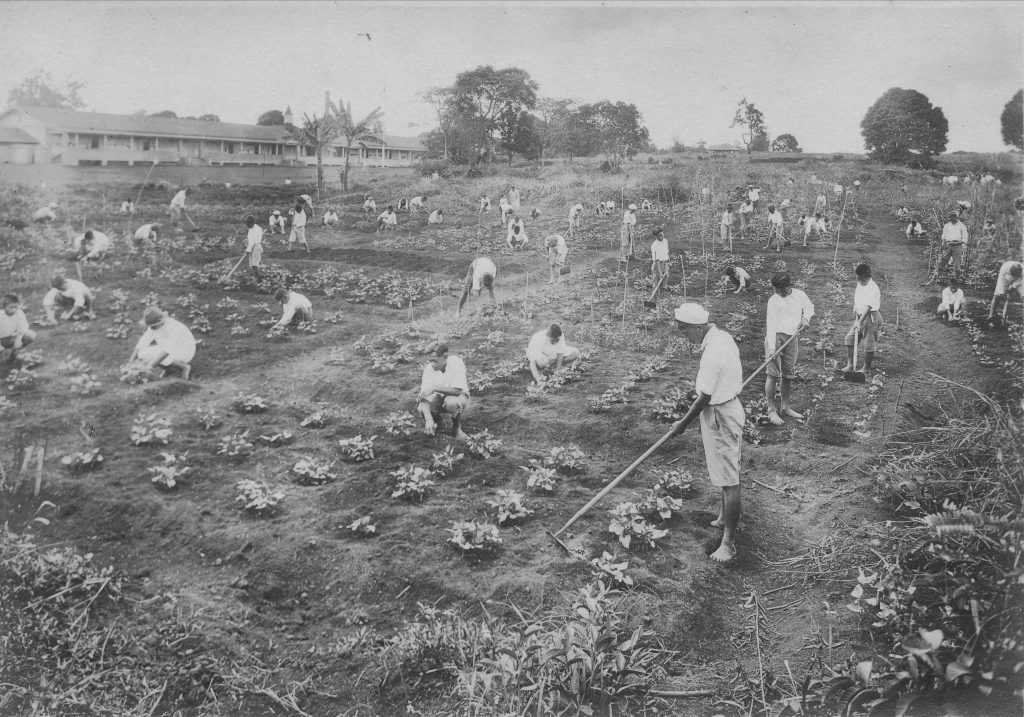
A group of more than 50 boys working in garden with uʻala (sweet potato) in rectangular mounds. The one-story building in the background is Kapiolani School, Hilo, Hawaiʻi, ca. 1925. This photo is part of a scrapbook featuring images and items related to Kapiolani School.

A group of Hilo women, from the Woman’s Board of Missions of the First Foreign Church and the Hawaiʻi Island Welfare Bureau, started a free non-sectarian kindergarten in 1895. The records of the Hilo free kindergarten include board minutes from 1895 to 1936. The Hawaiʻi public schools eventually adopted kindergarten into their system. The idea of kindergarten originated in Germany, merging the words kinder (children) and garten (garden). Friedrich Froebel, an education reformer, articulated the importance of nature study, music, stories, and play for young children and opened the first kindergarten classroom in 1837. In 1856, Margarethe Schurz founded the first German-speaking kindergarten in the U.S. in Watertown, Wisconsin. By the mid-19th century, many U.S. public schools adopted the practice in English.
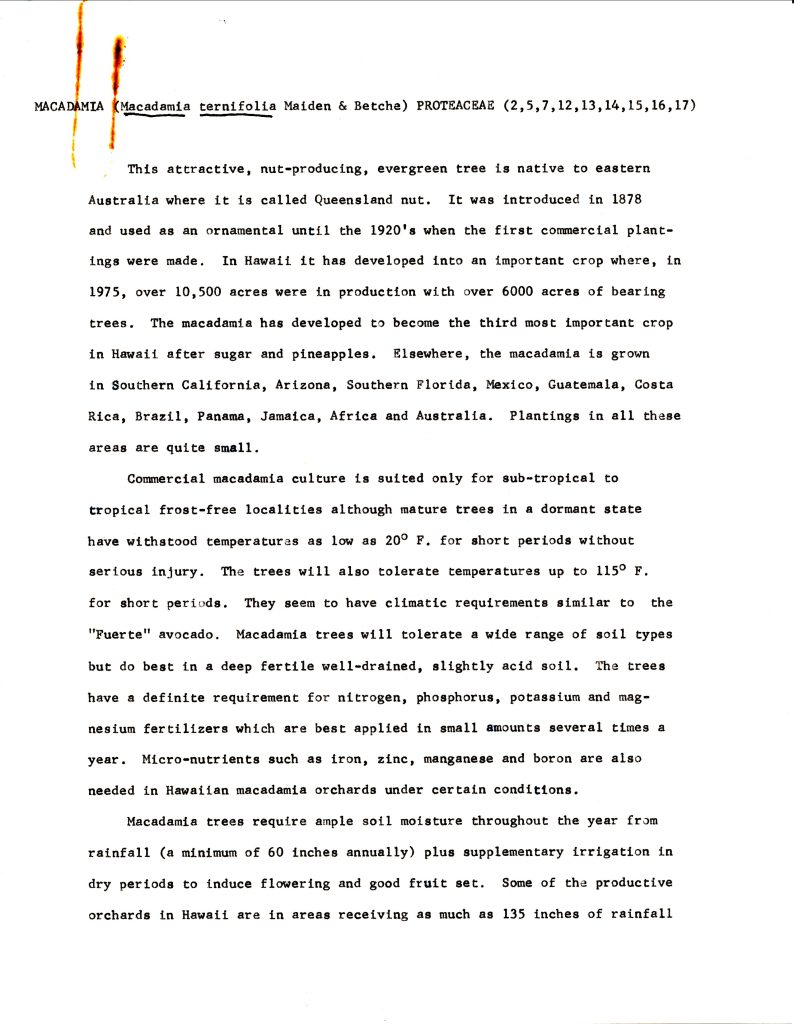
This is a review of article entitled “Macadamia Proteaceae,” by Dr. H.T. Hartman, University of California – Davis from the files of Hiroshi “Porky” Ooka, a horticulturalist for Keaʻau Orchard. The records of the Hawaii Macadamia Nut Industry Records are arranged into three series: macadamia nut operations of Keaʻau Orchard, records from the Hawaiʻi Macadamia Producers Association, and publications of other macadamia companies and associations. The organizational records date from 1914 to 1998.
